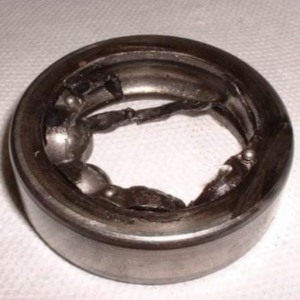Bearings, when properly installed, lubricated, and kept clean, are designed to meet manufacturers’ performance objectives without significant issues. However, anomalies in manufacturing, assembly, or maintenance can sometimes cause premature damage, significantly impacting their longevity. Let’s explore the most common types of bearing damage and how to promptly diagnose unusual wear.
Table of Contents
ToggleInadequate Lubrication
The majority of premature bearing failures are caused by inadequate lubrication. It’s important to clarify that “inadequate lubrication” does not necessarily mean insufficient lubrication. Damage often occurs due to over-lubrication or the use of a lubricant that is unsuitable for the system and the bearing.
Liquid or Solid Contamination
The second most common cause of bearing damage is contamination from liquid or solid substances. For this reason, proper maintenance of seals is crucial. Faulty or partially broken seals can lead to lubricant leakage on one hand and the ingress of contaminants on the other.
Incorrect Installation
The third most frequent cause of bearing damage is incorrect installation. Mistakes can take many forms, such as forced assembly, excessive heating, improper clearance, incorrect adjustments, and more.
How to Identify Bearing Damage
From the above, it should be clear that spontaneous damage to bearings is rare. More often, damage is caused by human error. Fortunately, most of these issues can be remedied if identified early. Noticing a decline in system performance during operation is key to taking corrective action.
For example (we’ll delve deeper into this topic in a future article), if you notice the system operating noisily, it could indicate excessive bearing play, contamination, or damage to rings and rolling elements. If the noise is inconsistent, the issue could be excessive play or an inadequate or insufficient lubricant. A high-pitched, shrill, and unpleasant sound may suggest insufficient clearance.
From this, it’s clear that noise is one of the most important indicators of bearing condition (though not the only one—consider vibrations as well). Pay close attention to noise to avoid further damage to the component and ensure the safety of the entire system in which it is integrated.

